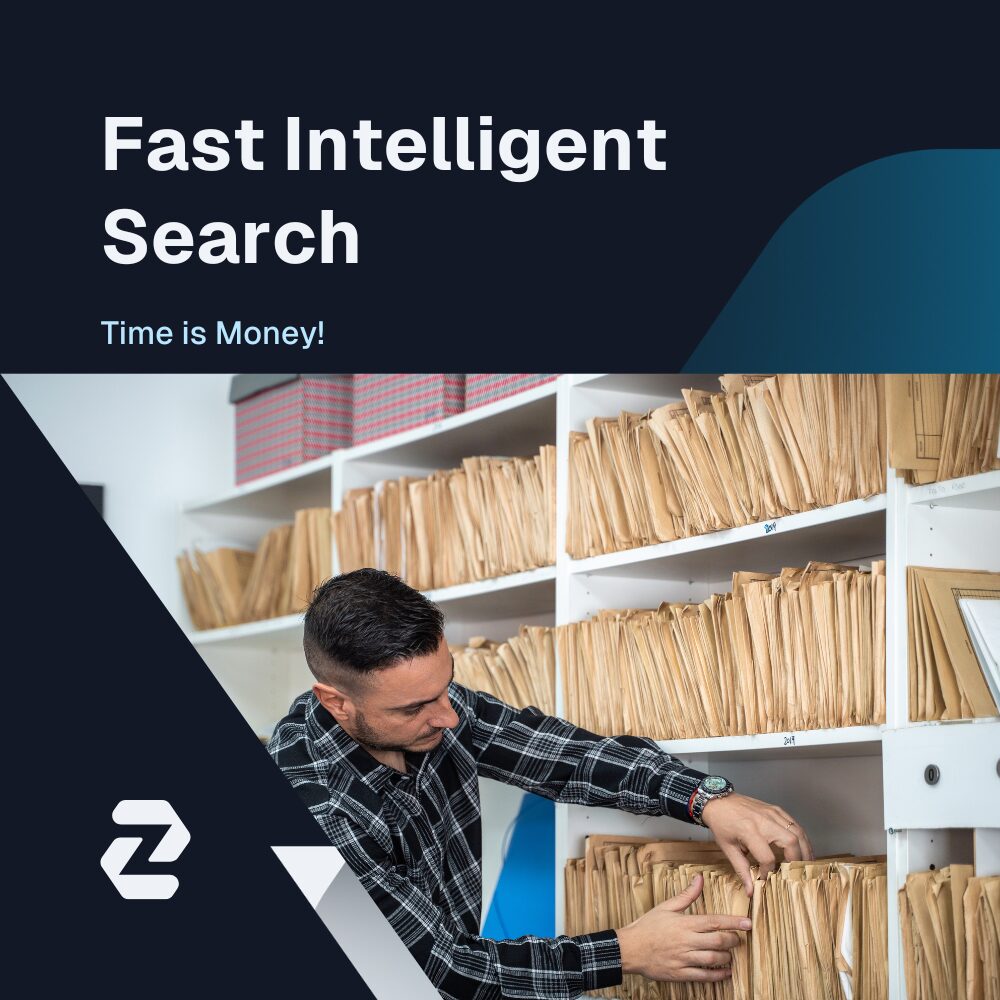In today’s professional landscape, data is at the heart of everything. For industries that handle sensitive information – like legal, accounting, and corporate services – it’s no longer enough to rely on basic cloud storage or email chains to manage files.
A reliable document management system (DMS) is essential not just to organize your workload but to protect your clients, reduce the risk of errors, and stay on top of deadlines.
This guide walks you through building a system that not only meets your current needs but evolves with you. Whether you’re a solo practitioner or part of a growing team, a solid Document Management System can help reduce daily stress, make your work more efficient, and ensure you stay compliant in an increasingly regulated environment.
Zygos is an all-in-one practice management software for legal firms & TCSPs, including a secure file-management system in European servers.
Book a Call to get a Demo of Zygos
What is Legal Document Management
Legal document management refers to the process of storing, organizing, securing, and retrieving legal files and records in a structured and efficient way. Unlike basic cloud storage or physical filing cabinets, a legal document management system (DMS) is built to
- handle contracts,
- case files,
- correspondence,
- court filings, and
- other confidential records…
…with the structure and security required in legal practice.
These systems support key functions such as version control, access permissions, deadline tracking, and audit trails, allowing professionals to stay compliant while maintaining quick access to critical information.
For lawyers, accountants, and corporate service providers, managing documents isn’t just about keeping things tidy – it’s central to how they serve clients, meet legal obligations, and maintain professional integrity. A proper legal Document Management System reduces administrative overhead, minimizes risk, and ensures that sensitive data is handled responsibly.
Why is it important?
Because legal and financial work involves strict confidentiality, time-sensitive deadlines, and complex regulatory requirements, a secure and well-organized document system isn’t just useful – it’s essential. It helps professionals work more efficiently while protecting their clients and their reputations.
How to Build Your Legal Document Management System in 5 Steps
Here’s how to create a system that supports your work, scales with your firm, and lets you focus more on service and less on searching for files:
- Prioritize Security from Day One
- Optimize to Easily Search & Find Documents
- Consider Scalable Infrastructure
- Ensure Secure Collaboration
- Customize for Your Specific Needs: Legal, Accounting, and Corporate Services
1. Prioritize Security from Day One
Security is non-negotiable, it is critical – especially when dealing with sensitive client information. Legal contracts, tax records, financial statements, and business filings contain data that could cause serious harm if compromised.
End-to-End Encryption
This means documents are encrypted both when they’re stored on the server and when they’re being transferred or accessed. Encryption scrambles the contents of a file so that even if someone intercepts it, they can’t read or use it without the right decryption key. This helps ensure that your documents remain confidential at every stage.
Role-Based Access Control
Not everyone in your organization needs to see every document. Role-based access control lets you assign viewing or editing permissions based on a user’s role. For example, an intern might only have access to basic files, while a senior partner could access client contracts. This reduces the risk of human error or accidental data leaks.
Audit Trails
Every time a document is accessed, edited, or shared, that action should be recorded. These logs help you track document activity and spot suspicious behavior. More importantly, they’re essential for meeting regulatory compliance standards and can be critical if you’re ever required to conduct an internal review or respond to a client query.
Data Residency and Compliance
Different jurisdictions have different rules about where and how data must be stored. For example, GDPR in the EU and HIPAA in the U.S. require strict controls on data handling. Make sure your Document Management Systems supports compliance with the data protection laws that apply to your clients and your practice.
2. Optimize to Easily Search & Find Documents
In professions where every minute counts, the ability to retrieve the right file instantly can make a big difference. Scrolling through folders or poorly labeled documents is not only frustrating – it’s a waste of money.
Full-Text Search
An efficient Document Management Systems should search not just file names but the content inside documents. Whether it’s a PDF, Word file, or scanned image with Optical Character Recognition, you should be able to find what you need by typing a keyword, client name, or case ID.
Smart Tagging and Metadata
The ability to tag documents with key details – such as the type of document, the client’s name, or the date created – adds structure to your files. This makes it easier to sort, filter, and organize large volumes of information without manually categorizing each file.
Natural Language Queries The best systems allow you to search the way you speak. Instead of using rigid filters, you can type something like, “Show all tax forms for Smith Holdings filed last year,” and the system knows what to do. This kind of intuitive search saves time and makes it easier for less technical users to find what they need.
3. Consider Scalable Infrastructure
As your client base expands, the number of files, users, and processes increases. A good document management system should handle this growth effortlessly – without turning into a bottleneck.
Cloud-Based Infrastructure
A cloud-based Document Management System lets you access documents from any device, no matter where you are. There’s no need to be tied to a specific office or computer, and you don’t have to worry about server maintenance or running out of storage space.
Integrations
Your Document Management System should work alongside the tools you already use. Whether it’s billing software, a CRM system, or a legal practice management platform, connecting these tools allows for smoother workflows. For example, linking client records with corresponding documents means less time switching between systems.
Automated Workflows
As your business grows, manually routing files for approval, review, or archiving becomes unsustainable. Automating these tasks can keep things moving efficiently. For example, once a draft contract is uploaded, it can automatically go to a manager for review and then be sent to the client. Fewer manual steps mean fewer chances for delay or error.
4. Ensure Secure Collaboration
Collaboration is part of daily life – whether with colleagues, clients, or external partners. But collaboration should never compromise security.
Secure Sharing
While sharing a document as an attachment in an email or with a link you should control access. You can set specific permissions – such as view-only or editable – add expiration dates, and even require a password. This way, you remain in control of who sees what, and for how long.
Version Control
With multiple people working on the same document, it’s easy to lose track of changes. Version control lets you see the entire history of edits and restore previous versions if necessary. This avoids confusion and ensures everyone is working from the correct version.
Comments and Notes
Being able to leave feedback directly within the document means fewer email threads and fewer misunderstandings. Notes can be tagged to specific sections of a file, keeping conversations focused and in context. It’s a more efficient way to collaborate, especially when deadlines are tight.

5. Customize for Your Specific Needs: Legal, Accounting, and Corporate Services
Generic file storage tools don’t meet the demands of regulated industries. You need features built specifically for the way you work.
Reusable Templates
Standard forms – like NDAs, engagement letters, tax forms, or regulatory filings – should be easy to generate. With templates, you don’t have to recreate common documents from scratch each time. Just fill in the client-specific fields and go.
Deadline Tracking
Missing a filing date or court deadline can be costly. A good Document Management Systems links critical documents to your calendar or task manager, so you get reminders and stay on schedule. Whether it’s a tax submission or a business license renewal, nothing should slip through the cracks.
Client Portals
Secure client portals allow your clients to upload and view documents in one place. It’s more professional and safer than using email, and it reduces unnecessary back-and-forth. Clients get transparency and peace of mind, and you spend less time chasing files.
Conclusion
A well-designed document management system isn’t just about using technology – it’s a practical tool that helps you stay organized, deliver better service, and sleep easier at night. From secure storage and fast search to easy collaboration and smart scaling, your Document Management System should support you in doing your best work.
At Zygos, we’ve built tools with legal, accounting, and corporate professionals in mind – because we understand your time is valuable, your work is sensitive, and your clients depend on you. If you’re ready to make document management simpler, more secure, and less stressful, give Zygos a try.




